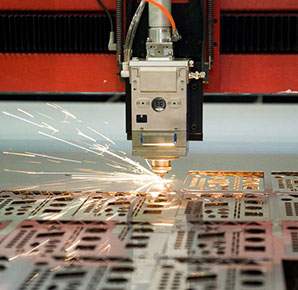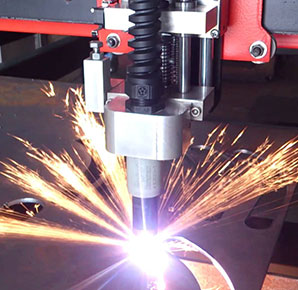
Machining precautions for wear-resistant steel plate
Due to the high hardness and double-layer characteristics of wear-resistant steel plate, more attention should be paid when machining. For example, for the cutting of wear-resistant steel plate, plasma cutting, water cutter, electric spark, carbon arc and abrasive saw can be used to cut a large area of clad steel plate into the required shape.
The ideal method is to use air or inert gas plasma arc cutting, the recommended method is to start cutting from the back of the alloy. Carbon arc cutting shall start from one side of the substrate. If a saw blade is used, it can only be cut in a straight line, and a silicon carbide saw blade is required.
The wear-resistant steel plate can be cold formed, bent to the required shape, or arc or circle as required. For concave forming, the alloy cracks will be closed due to the internal stress; for convex forming, the cracks will become larger, which is a normal site. If the crack is too large, repair it with corresponding welding rod. Crimp into tubes according to the recommended small bending radius.
The large holes on the wear-resistant steel plate can be cut by plasma, and the small holes are recommended to be cut by water cutter, electric spark, etc. Countersunk holes for assembling bolts can be processed by special technology. The base metal of large area clad steel plate is a steel plate with good weldability. When two steel plates are needed to be spliced, the back base metal can be welded together first, and then the front hardfacing layer can be filled with corresponding welding rod. The wear-resistant steel plate can also be welded to other steel structures.
CONTACT US

No limited to time and space, you can call for our online-service personnel for consultation, or fill in the table below for an enquiry. Your message will be promptly resolved.
- Tel:+86-21-61182423
- Fax:+86-21-61182425
- E-mail:[email protected]
- Skype:shanghai.katalor
- Address:Unit 6,lane 2500,xiupu Road,Kangqiao Industrial Area,Pudong New District,Shanghai
- Online Consultation
- After-sales Engineer













